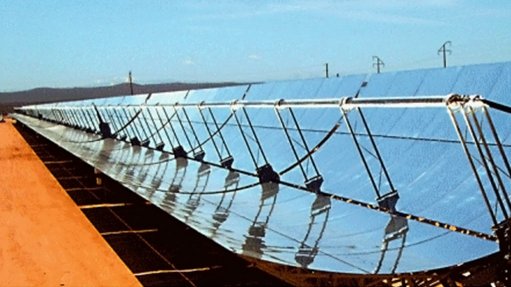
South Africa has been ranked third, after China and Brazil, in a new country-by-country assessment of 55 renewable-energy markets in Africa, Asia, Latin America and the Caribbean.
The Climatescope 2014 report and index, which has been compiled by Bloomberg New Energy Finance on behalf of American and British government and development agencies, shows that clean-energy investments in developing countries have outpaced those in developed countries.
It also calculates that the installed base in developing countries has more than doubled in the past five years to 142 GW, which is slightly above the total installed capacity of France.
China, Brazil, South Africa, India, Chile, Uruguay, Kenya, Mexico, Indonesia and Uganda are ranked in the top ten, with South Africa having surged ahead with nearly $10-billion worth of clean energy investment in the last two years.
South Africa, the study found, accounted for almost 90% of investments in sub-Saharan Africa during this period and was second-best globally on Climatescope’s ‘Clean Energy Investment’ ranking, based on the cumulative growth rate in 2012/13 of clean-energy investment – Uruguay led the ranking.
Solar accounted for the largest share of clean-energy investment to date, with a total of $6.7-billion out of the $9.4-billion invested in South Afirca since 2006.
The study indicates that the Renewable Energy Independent Power Producer Procurement Programme (REIPPPP) has transformed the sector since its introduction in 2012. Prior to the REIPPPP reverse auctions, only $0.6-billion had been invested in renewables.
However, the country still performed poorly (36th) on the ‘Enabling Framework Parameter’, owing to its low electricity prices and other market-limiting developments, such as the fall in power demand in 2013. Only its clean energy policies scored well, the report notes.
South Africa also scores highly for the quotient of locally based financial backers, which amounted to $2-billion of the total $9.4-billion.
“South Africa’s commercial banks have been major supporters of renewables and the main reason the country achieved a good score on the local investment indicator. Investment has also come from government institutions and asset managers within the country,” the study says, highlighting the role of the Industrial Development Corporation, which has financed 16 clean-energy projects to date.
However, the country’s largest deal in 2013 was the Eskom Upington solar thermal electricity generating plant, which did not fall under the REIPPPP.
The Eskom project will cost $1.2-billion, with all debt provided by development finance institutions. The next largest deal was ACWA Power’s 50 MW Bokpoort solar thermal plant at a cost of $506-million, followed by Cennergi’s Amakhala Emoyeni wind farm, at $412-million.
Overall, Climatescope 2014 has also found that developing nations represent a large and rapidly growing share of the world’s clean energy investment.
From 2008 to 2013, Climatescope countries added 142 GW of new, non-large hydro renewables capacity, which represented a 143% growth rate. By comparison, developed countries added 213 GW, posting a clean energy capacity growth rate of 84%.
“The results suggest renewable technologies can be just as cost-competitive in emerging parts of the world as they are in richer nations,” the study asserted, adding that developing countries were rapidly strengthening their policy frameworks to support more clean energy investment.